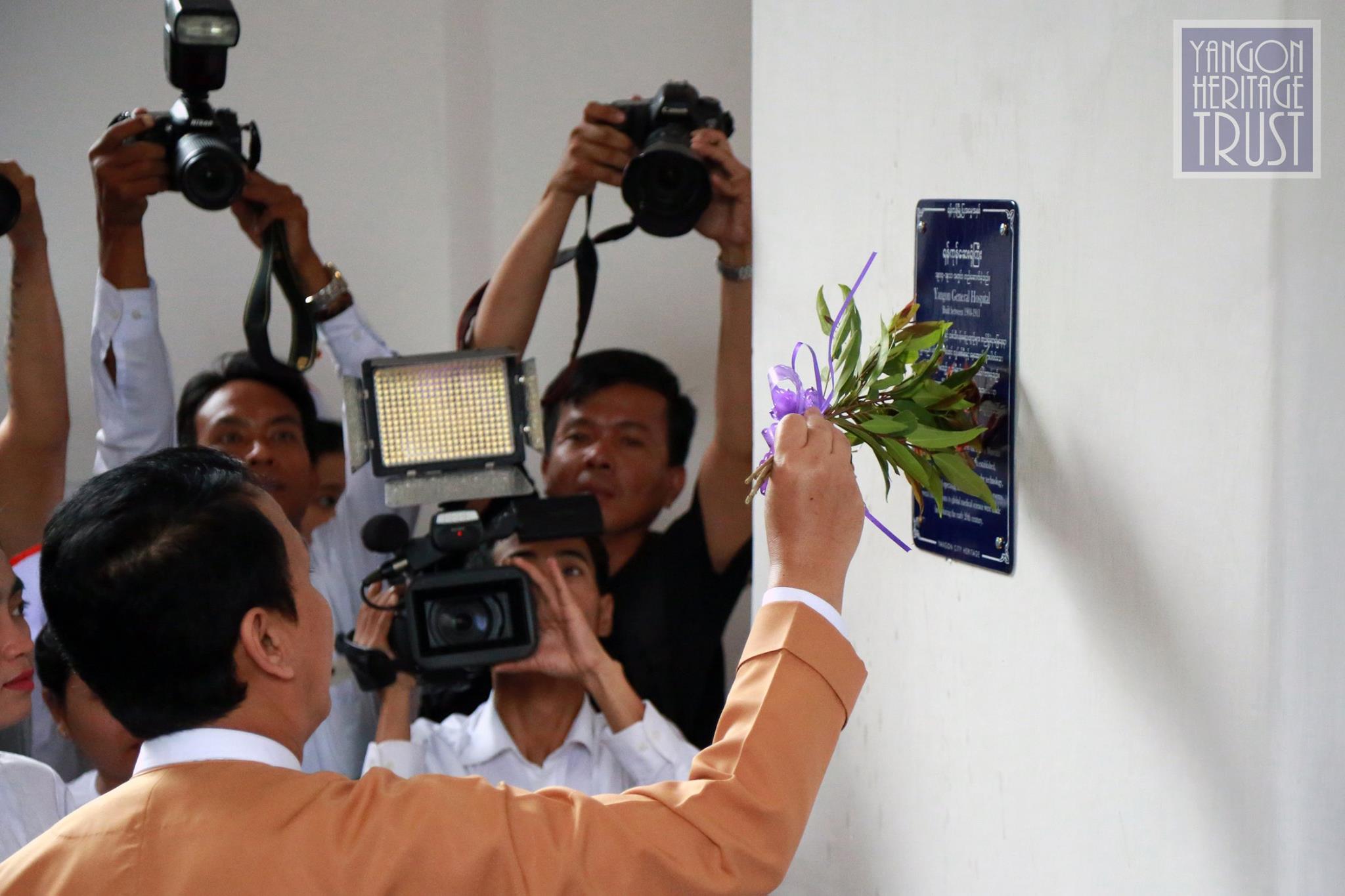Yangon General Hospital became the latest recipient of a Blue Plaque yesterday, marking the building’s prominent role in the city’s history.
The hospital was the 19th landmark to receive the honor, awarded by the Yangon Heritage Trust. The ceremony was attended Yangon Region Chief Minister Phyo Min Thein, hospital staff, and Yangon Heritage Trust staff.
Construction began on the hospital in 1904, when Burma was still firmly under the control of the British Empire, after the preexisting hospital grew overcrowded. Plans for the new building were drawn up by architect Henry Hoyne-Fox, who also designed the Secretariat Building. Fox fitted the hospital with the latest in medical improvement at that time, including operating theatres with electricity and anesthesia rooms.
The new Yangon General Hospital opened its doors in 1911. It had 342 beds, a morgue, and the country’s first bacteriological laboratory, where several 20th-century contributions to global medical science were made.
When the Imperial Japanese Army occupied Burma during WWII, the hospital was reserved for Japanese personnel, and the hospital’s operations had to be relocated to another part of downtown Yangon.
After the war, the hospital expanded, and by 1962, its capacity had risen to 1,500 patients.

The significance of Yangon General Hospital reaches into Myanmar’s contemporary history, serving as a stage for some of the country’s most pivotal moments. Former opposition leader and current state counsellor Aung San Suu Kyi made her first public speech on at the hospital on August 24, 1988.
The Blue Plaque project aims to highlight the historical significance of Yangon’s landmarks and make their histories accessible to the public. The plaques contain short histories of each site in both Burmese and English.
Previous recipients include City Hall, the Armenian Church, Musmeah Yeshua Synagogue, and the Sofaer Building.




